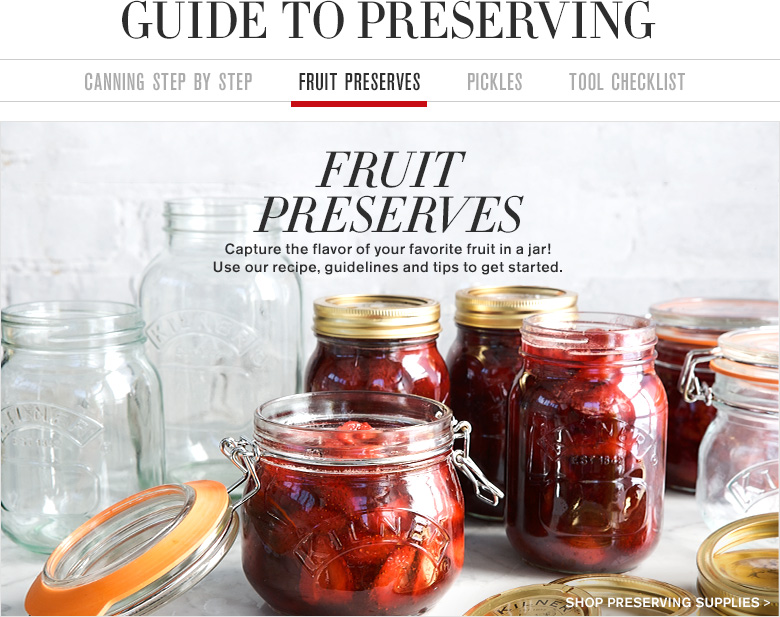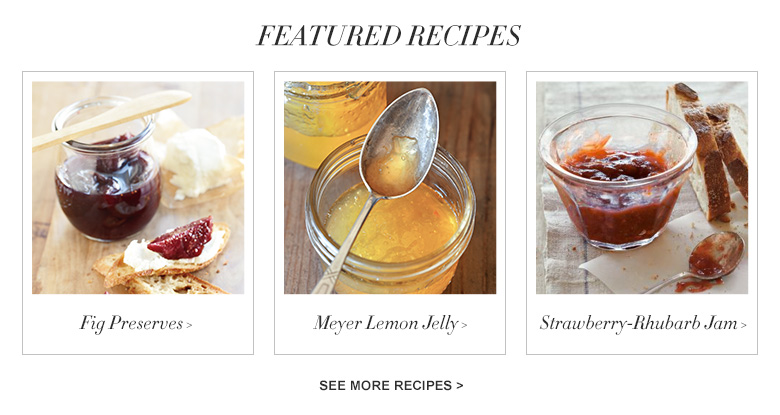

Learn how just a handful of ingredients — a sweetener, acid and peak-season fruit — can make vibrant fruit spreads.
fruit
Use homegrown or farmers' market fruits for the freshest, purest flavor. Underripe fruits contain more pectin and acid, which you need for making fruit preserves, but they can also be less flavorful. For the best balance of flavor and consistency, combine slightly underripe and just-ripe fruits. Avoid waxed fruits; you often need to peel them before preserving, squandering the valuable pectin in their skins.
pectin
Pectin is a natural carbohydrate concentrated in the skin and seeds of fruit. When combined with the proper ratio of sugar and acid, it makes liquids jell. Apples and citrus fruits are high in pectin, and they are used in many preserves cooking extracts their pectin and help mixtures thicken.
flavorings
Fresh, flavorful herbs and spices—from rosemary to rose hips—can add layers of flavor to your preserves. Take care not to add too much, however, or you'll risk overpowering the fruit.
acid
A balance of acid and sugar in fruit preserves ensures not only a good set but also delicious flavor. Lemon juice works well as an acid in most recipes. A good guideline is 1/4 cup lemon juice per 1 lb. fruit, but taste your preserves to see if they need more. Citric acid, or a combination of citric and ascorbic acid, can also be substituted for lemon juice. Both are available in health-food stores in crystallized form.
sweeteners
All fruits contain natural sugar, but preserves need extra sugar to activate the pectin. Refined white sugar is the most commonly used because it imparts little flavor and won't overpower the fruit. You can substitute organic sugar or evaporated cane juice, or use brown sugar for its subtle caramel flavor. Don't substitute honey, syrups, or artificial sweeteners for the sugar – their flavor is usually too strong.
jam
Chopped, crushed or mashed fruit cooked with sugar. The set, or firmness, of the finished jam varies depending on the cook's preference and the pectin content of the fruit. The best jams are made with fruits that have medium to high levels of natural pectin.
marmalade
Chopped, pureed or sliced citrus peel—either one type or a mixture from different fruits—cooked with sugar. The soft, cooked peel is then suspended in a jelly made from the fruit juice.
jelly
Jelled fruit juice with added sugar. A perfect jelly should be clear and should jiggle when touched, and never be rubbery. Jellies do not contain any pieces of fruit or peel. Some jellies are made with savory ingredients, like vegetables or herbs.
conserves
Usually a chunky combination of two or more fruits, often including dried fruits or nuts, cooked with sugar.
preserves
Whole cooked fruits or fruit pieces suspended in a soft jelly or syrup. Preserves often include spices, wine or spirits and are typically made from fruits that have little natural pectin, or that would otherwise require time-consuming processing, such as cherries, which must be pitted for jam or other spreads. "Preserves" is also a common term for all fruit spreads.
fruit butter
Pureed fruit cooked slowly with a little sugar until the liquid evaporates and the mixture becomes dark and thick.






